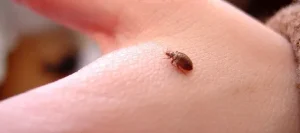Avoiding bed bug bites proves more challenging in three Michigan cities compared to most locations in the country. However, the Windy City, Chicago, claims the undesirable distinction of being ranked as the worst city for bed bugs in the nation for the fourth consecutive year, according to Orkin’s 50 Bed Bug Cities List. New York City and Philadelphia closely trail behind, with Cleveland and Los Angeles maintaining their positions in the subsequent spots.
There is some relatively positive news for Michigan, as two out of the three cities on the bed bug list have seen a slight decrease in their rankings this year, and one city is no longer included in the top 50.
Detroit maintains its position at number six, while Grand Rapids has moved down a couple of spots from 12 to 14. Flint has also experienced a slight drop, moving from 21 to 23. Notably, Lansing, which was ranked at 42 last year, is no longer featured on the list.
Orkin compiles its annual bed bug cities list based on treatment data gathered from metro areas with the highest bed bug treatments conducted between Dec. 1, 2022, and Nov. 30, 2023. The rankings encompass both residential and commercial treatments.
To identify bed bugs, one should note their small size, typically measuring only 3/16 of an inch, and their red to dark brown color. These nocturnal pests emerge from hiding to feed on humans while they sleep, relying solely on blood as their food source. Bed bugs are adept at clinging onto items like luggage, purses, and personal belongings.
Ben Hottel, an Orkin entomologist, emphasizes the resilience of bed bugs, making them challenging to control. As travel plans increase, he advises Americans to be aware of pest identification and proper control measures. While bed bugs are visible to the naked eye, their excellent hiding abilities highlight the importance of involving a trained professional at the first sign of a bed bug infestation.
Prevention and regular inspection are crucial in managing bed bug infestations. Conduct routine inspections of your home, focusing on potential hiding spots such as mattress tags and seams, behind baseboards, headboards, electrical outlets, and picture frames. Key inspection times include when moving in, returning from a trip, after service worker visits, or following overnight guests.
Reduce clutter in your living space to make bed bugs easier to detect. While staying at a hotel, be vigilant for small, ink-covered stains on mattress seams, soft furniture, and behind headboards. Lift and check hiding spots like mattresses, box springs, furniture, and areas with torn wallpaper.
When traveling, keep your luggage elevated and away from the bed and walls. Opt for safe locations like the bathroom or counters. Before returning home, thoroughly examine your luggage during repacking, and avoid placing it near your bed.
As a final precaution, place all dryer-safe clothing from your luggage in the dryer for at least 30-45 minutes at the highest setting upon returning home. This step helps eliminate any potential bed bugs that might have hitchhiked on your clothing during your travels.
Original Source: MLive




